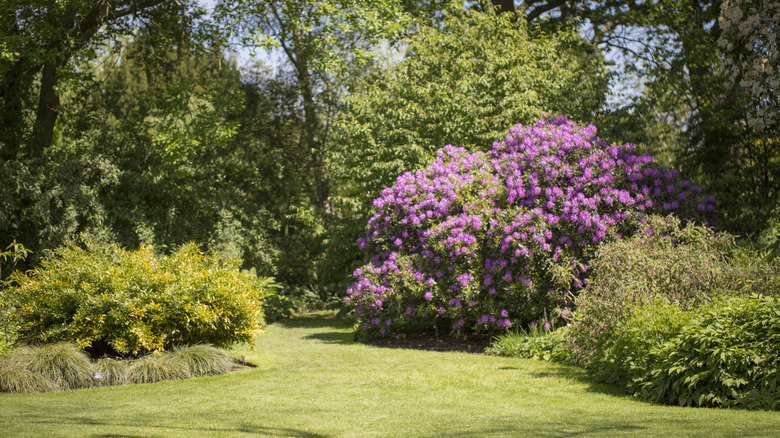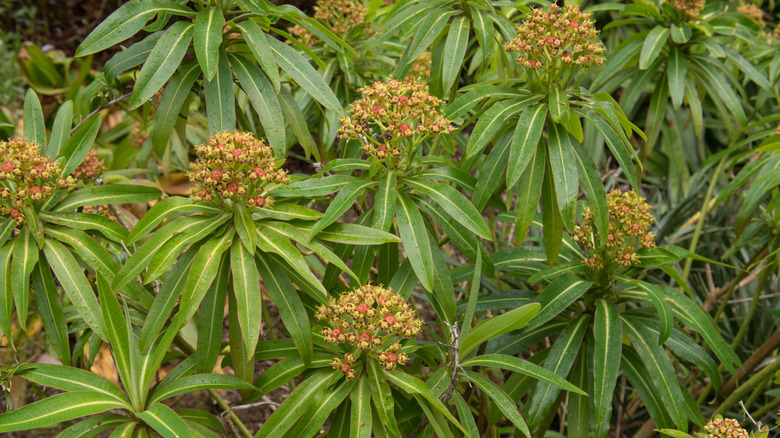The Evergreen Shrub That Adds Structure And Sweet Fragrance To Your Garden
From the visual beauty of bright, native, and colorful wildflowers to the tactile nature of many cacti plants and shrubs, a great garden engages all of the senses. When we are building our garden and adding new plants, it is helpful to consider how we can enhance our sensory experience through the plants we choose. Thankfully, there are some fantastic shrubs that are perfect for bringing great fragrances to your space. One of these shrubs is the honey spurge (Euphorbia mellifera). Not only does it smell great, but it also grows in a dome shape that is neat and easy to maintain, making it a great option if you are looking to add structure and fragrance to your garden.
Native to the Canary Islands and Madeira, this intriguing evergreen shrub gets its name from its sweet-smelling flowers that bloom in April and May. The word mellifera means 'honey-bearing', which reflects the rich fragrance of the flowers that arrive like fireworks in the springtime. With long, green leaves and small, starlike flowers, the honey spurge is a feast for the eyes as well as the nose.
How to look after your honey spurge
The honey spurge is a fairly hardy perennial that flourishes in USDA Hardiness Zones 9 and above. In colder regions, it requires protection over the winter months, as it does not tolerate frost and dampness well. If you are introducing honey spurge to your garden, ensure you plant the shrub in full sun with well-drained soil. It is a heat- and drought-tolerant plant that can grow up to eight feet in height.
When it comes to care, the honey spurge is a relatively low-maintenance plant. You may want to cut back the flower stems once they have faded after blooming, as this will help to keep the dome shape of the shrub. If any of the trunks are looking dishevelled or leggy, you can also cut these back in spring. After this, it will take a few years before flowering comes back. It is essential to wear suitable gardening gloves at all times when working on your honey spurge. Like all euphorbias, the honey spurge produces latex, which is a toxic, milky sap that can be irritating to the skin.

